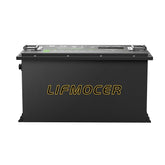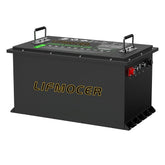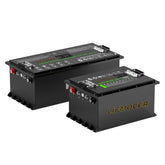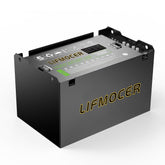Lithium Jump Starters: Buyer's Checklist
Choosing a battery jump starter isn’t just about getting the most amps—it’s about matching performance, safety, and reliability to your real-world needs. Use this checklist to ensure you're picking a unit that's powerful, durable, and versatile.
1. Power Ratings: Peak and Cold Cranking Amps (CCA)
There are two critical power ratings for lithium jump starter: one is the peak current, which is the inrush current generated in a very short period of time, and the other is the cold-start current, which represents the amount of power that can be sustained by the device in a low-temperature environment. Cold start current is especially critical in cold weather conditions.
Different types of vehicles have different needs for cold start current. In general, cars usually require 1000 - 1500A of cold start current to start; SUVs and light trucks require 1500 - 2500A; and heavy trucks often require more than 2500A of cold start current.
Here's an important tip: when selecting an emergency starter, choose a unit that has a real, verified cold start current (CCA). You should know that many brands only focus on publicizing the peak current, which can easily make you have a wrong prediction of the actual performance of the product. Therefore, you must carefully check the key parameter of Cold Start Current (CCA) on the product specification sheet.

2. Battery Chemistry: Lithium-Ion vs. LiFePO₄
Nowadays, most of the car on the market car jump starter is lithium-ion (Li-ion) batteries, this type of battery has a compact size, rapid charging characteristics. However, compared with it, lithium iron phosphate (LiFePO₄) battery has a series of more prominent advantages:
From the point of view of the number of charging cycles, LiFePO₄ batteries can reach more than 2,000 charging cycles, while the average number of lithium batteries charging cycles is about 500 - 1,000 times.
In terms of adaptability to extreme temperatures, Li-FePO4 battery has excellent performance and can operate stably in temperatures ranging from -30°C to 60°C, while lithium battery has relatively poorer performance in extreme temperatures.
In terms of thermal safety, lithium iron phosphate batteries are far superior to lithium-ion batteries, which will not overheat or catch fire and other safety hazards, making it more comfortable to use.
If you are shopping for battery jump starter, more important to the product's long service life and high reliability, then lithium iron phosphate (LiFePO₄) battery is undoubtedly your ideal choice.
3. Battery Capacity (mAh / Wh)
Capacity is the parameter that determines the number of times you can start your vehicle and the frequency with which you can charge electronic devices such as cell phones and tablets when using an car jump starter. Generally speaking, a battery with a minimum capacity of 12,000 mAh (approx. 40 watt-hours) is sufficient for a single vehicle start, while a battery with a capacity of 20,000 - 30,000 mAh will be able to meet the need for multiple vehicle restarts and the charging of electronic devices.
4. Temperature Range
Lithium batteries are notorious for their performance in extreme cold, and their capacity drops rapidly and dramatically when temperatures fall below freezing. If you plan to travel during the winter months, make sure that your battery is rated to operate at -20°C or lower to ensure that it will function properly in cold environments.
5. Safety Features & Build Quality
Be sure to carefully check the following mandatory safety protection features:
- Battery jump starters have a reverse polarity warning function and the ability to shut off the output immediately in the event of a reverse polarity situation to prevent damage to the equipment.
- Jump start battery pack has a spark-proof design or is equipped with an automatic clamp that automatically disconnects the connection in the event of a possible spark, guaranteeing safety in use.
- Jump starter pack equipped with short-circuit protection as well as over-current and over-voltage protection mechanisms to avoid equipment damage or even danger due to circuit abnormalities.
- Auto jump starter equipped with LED diagnostic indicator or display, which can clearly show the direction and current status of the clamp, convenient for users to operate and troubleshooting.
In addition, the structural design of the product should also be checked:
- Use thick cables with specifications of 10 - 12 AWG to reduce resistance and ensure stable current transmission.
- The shell is made of strong nylon or rubber to enhance the durability and impact resistance of the product. It is best if the product can reach IP65 or above protection level, or pass the 1 meter drop test to adapt to various complex use environments.

6. Recharging Options
Devices with USB-C Power Delivery (PD) technology can be fully charged in just 2 to 4 hours when paired with a powerful wall charger. Basic models can take 8 to 12 hours to fully charge using an AC adapter. It's also worth noting that devices with dual charging options (USB-C port with car adapter) offer greater convenience and flexibility for charging needs on the go.
7. Convenience Features
Modern jump starters are very versatile and often incorporate the following useful features:
- The LED flashlight is equipped with multiple modes, ranging from general illumination to strobe warning and distress signaling;
- Multiple USB ports and a 12V DC output;
- A digital display that shows the voltage and the remaining battery power in real time;
- Built-in air compressor for tire inflation.

8. Warranty and Support
When picking a jump starter for car, prioritize a brand with an outstanding reputation. These brands tend to offer at least a 1 year warranty (ideally 2 - 3 years) as well as prompt and effective technical support. Brands such as NOCO, Hulkman, GOOLOO, and LIFMOCER are market-tested, reliable choices that offer greater assurance of product quality and subsequent replacement parts.
9. Quick Comparison Table
| Spec | Minimum Viable | Recommended |
|---|---|---|
| CCA Peak | 1,000 A | 1,500–2,500 A+ |
| Capacity | 12k mAh (~40 Wh) | 20–30k mAh (~60–90 Wh) |
| Recharge Time | 8–12 hrs (AC) | 2–4 hrs (USB‑C PD) |
| Cold Rating | –10 °C | –20 °C or better |
| Protection | Reverse/Short only | Full suite incl. spark-proof |
10. Maintenance Tips
- Even when the device is not in use, there is a loss of power, so it is recommended to recharge it every 2 - 3 months.
- The device should be stored in an environment with a temperature range of 0 - 40°C. If the device is to be exposed to extreme temperatures, lithium iron phosphate batteries are recommended.
- Periodically shake the fixture and power supply unit to double check for loose parts.

FAQ
What size jump starter do I need for my SUV?
Choose at least 1,500 A CCA peak. SUVs and light trucks typically require 1,500–2,500 A, depending on engine size and temperature.
Is fast USB‑C charging necessary?
Yes—it cuts recharge time down to hours instead of overnight, which is valuable during travel or after repeated use.
Can I leave a lithium jump starter in my trunk in winter?
If the trunk temperature in the local winter is not too low for a long time and is not so low that the lithium battery performance is seriously damaged (generally, the performance of ordinary lithium batteries drops sharply below -20°C), it can be used for a short period of time, but it is not recommended to be used in an extremely cold environment for a long time.
Ready to choose? Use this checklist when comparing models to ensure reliable starts, powerful features, and compact design.















